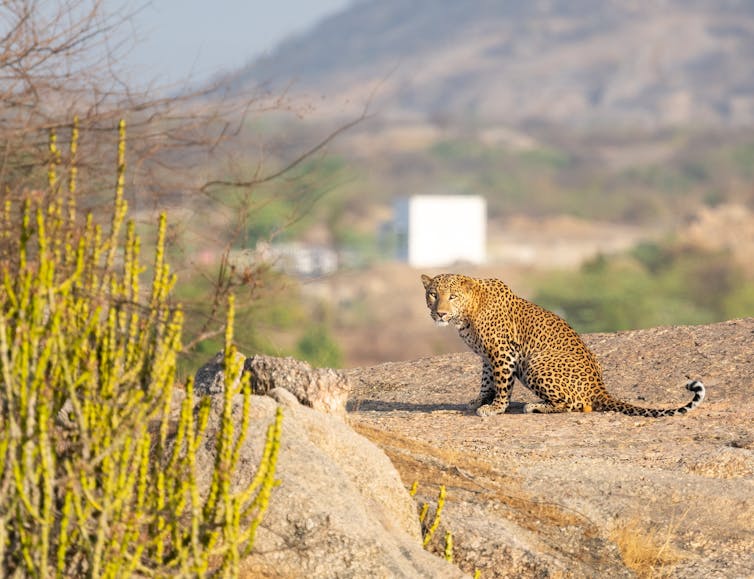
Dr.MYM/Shutterstock
Heather Alberro, University of Manchester
As species go extinct and a habitable climate teeters, it’s understandable to feel despair.
Some of the world’s top climate scientists have expressed their mounting hopelessness at the prospect of reaching 3°C by 2100. This hellish scenario, well in excess of the 1.5°C countries agreed to aim for when they signed the 2015 Paris agreement, would indeed spell disaster for much of life on Earth.
As a lecturer in sustainability, I often hear my anxious students bemoan the impossibility of building a way out of ecological collapse. However, the greatest danger is fatalism, and assuming, as Margaret Thatcher claimed, that “there is no alternative”.
There is a vast ocean of possibility for transforming the planet. Increasingly, cities are in the vanguard of forging more sustainable worlds.
Car-free futures
Since the early 1900s, the car has afforded a sense of freedom for some while infringing on the freedoms of others.
Cars, particularly SUVs, are a major source of air pollution and CO₂ emissions globally. Motorways and car parking spaces have transformed Earth’s terrain and monopolised public space. For those of us in industrialised societies, it is difficult to imagine life without cars.
Global sales of electric vehicles are projected to continue rising. Yet even these supposed solutions to an unsustainable transport sector require a lot of space and materials to make and maintain.
With cities set to host nearly 70% of all people by 2050, space and livability are key concerns. As such, cities across Europe and beyond are beginning to reclaim their streets.
Between 2019 and 2022, the number of low-emissions zones, areas that regulate the most polluting vehicles in order to improve air quality and help to protect public health, expanded by 40% in European cities. Research suggests that policies to restrict car use such as congestion charges and raised parking fees can further discourage their use. However, providing viable and accessible alternatives is also crucial: as such, many cities are also widening walkways, building bike lanes and making public transport cheaper and easier to access.
An estimated 80,000 cars used to pass daily through the centre of Pontevedra, a city in north-west Spain. Mayor Miguel Anxo Fernandez Lores instituted a ban on cars in 1999 and removed on-street parking spaces. The city has since drastically reduced air pollution and hasn’t had a vehicular death in over a decade.

Trabantos/Shutterstock
Living cities
Cement and concrete are widely used to make major infrastructure such as roads, bridges, buildings and dams. The cement industry accounts for up to 9% of global emissions. Moreover, the open-pit quarrying of limestone, a key ingredient in cement, involves removing topsoil and vegetation which rips up ecosystems and biodiversity and increases flooding risks.
A burgeoning “depaving” movement originated in Portland, Oregon in 2008 and has removed concrete and asphalt from cities including Chicago, London and several cities across Canada, replacing it with plants and soil.
Depaving is an example of the wider urban rewilding movement which aims to restore natural habitats and expand green spaces in cities for social and ecological wellbeing.
Multispecies coexistence
A new report by the World Wildlife Fund for Nature (WWF) has documented an average 73% decline in the abundance of monitored wildlife populations globally since 1970. Despite such unfathomable losses, many cities are being transformed into oases of multispecies life.
Prized for their fur, beavers were hunted to extinction in the UK by the 16th century. Their water damming activities create homes for other species such as birds and invertebrates and help prevent flooding. Eurasian beavers have been thriving in Sweden, Norway and Germany since their reintroduction in the 1920s and 1960s, respectively.
In 2022, beavers were designated a protected species in England. In October 2023, London saw its first baby beaver in over 400 years.
Melbourne has launched a project to create a 18,000 square-metre garden in the city by 2028, with at least 20 local plant species for each square metre. An 8-kilometre long pollinator corridor is also being created to allow wildlife to travel between 200 interconnected gardens and further help local pollinators flourish.
Living alongside larger predators brings unique challenges. However, as with any functional relationship, respect is key for coexistence. Los Angeles and Mumbai are two major cities that are learning to live alongside mountain lions and leopards. Local officials have launched public education initiatives urging people to, for instance, maintain a safe distance from the animals and not walk alone outside at night. In cases where wildlife conflicts occur, such as between wolves and farmers who have lost livestock, non-lethal methods such as wolf-proof fences and guard dogs have been found to be more effective solutions than culls.

Nedla/Shutterstock
Environmental justice now
Cities, particularly in wealthy countries, are only a small part of the story.
At just over 500 years old, the modern capitalist system, imposed globally through European colonialism, is a relatively recent development. Despite its influence, the visionary author Ursula K. Le Guin reminded us that “any human power can be resisted and changed by human beings”.
Indigenous peoples numbering 476 million across 90 countries represent thousands of distinct cultures that persist as living proof of the enduring possibilities of radically different ways of living.
An online database tracks 4,189 environmental justice movements worldwide. From multi-tribe Indigenous Amazonian alliances keeping illegal miners at bay, to countless local communities and activist groups resisting the construction of new fossil fuel infrastructure. Over the last few years, these place-based struggles have either stopped, stalled or forced the suspension of at least one-quarter of planned extractive projects.
These examples demonstrate hope in action, and suggest that the radical changes required to avert climate and ecological breakdown are often a simple question of will and collective resolve.
Reality, like the future, is never fixed. Whether the world is 2, 3 or 4-degrees warmer by 2100 depends on actions taken today. The terrain ahead will be full of challenges. But, glimmers of a better world are already here.

Don’t have time to read about climate change as much as you’d like?
Get our award-winning weekly roundup in your inbox instead. Every Wednesday, The Conversation’s environment editor writes Imagine, a short email that goes a little deeper into just one climate issue. Join the 35,000+ readers who’ve subscribed so far.![]()
Heather Alberro, Lecturer in Sustainability, University of Manchester
This article is republished from The Conversation under a Creative Commons license. Read the original article.







